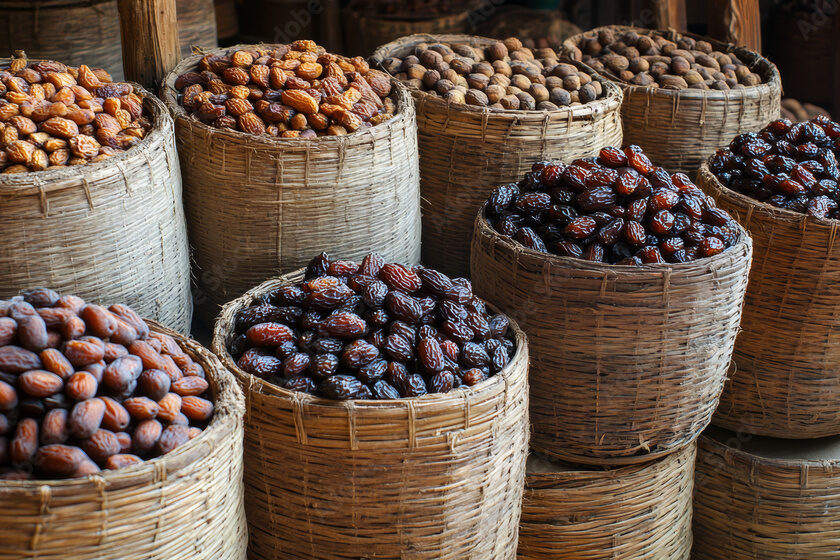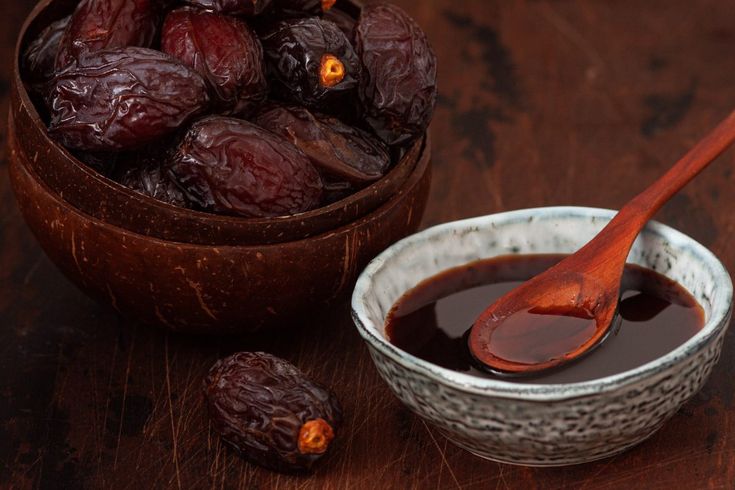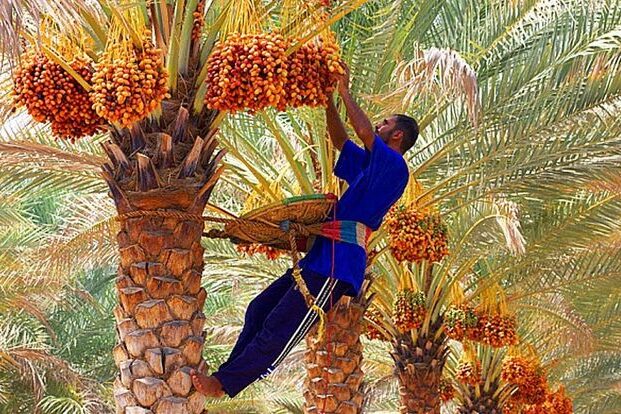Cultivating Dates: The Ancient Tree That Keeps on Giving

For over 6,000 years, humanity has cherished the incredible date palm (Phoenix dactylifera), a tree that not only symbolizes survival in harsh climates but also provides one of the most versatile fruits on earth. Thriving in arid regions like the Middle East, North Africa, and South Asia, the date palm is a marvel of nature. But what makes date palm cultivation so extraordinary? Let’s explore the magic behind this ancient tradition.
Desert Warriors: How Date Palms Defy the Odds
Date palms are true champions of the desert. Flourishing in extreme heat and arid conditions where few other crops can survive, these trees can withstand temperatures soaring above 120°F (49°C). Remarkably drought-tolerant, they thrive with minimal water, making them a beacon of sustainability for regions battling desertification and water scarcity.
Nature’s Sustainable Miracle: The Eco-Friendly Date Palm
In a world where water is increasingly precious, date palm cultivation stands out as a sustainable solution. They require less water than many other crops and play a vital role in stabilizing arid ecosystems. By cultivating these resilient trees, farmers contribute to environmental conservation while securing a reliable source of food and income.
Farming Dates: A Step-by-Step Insight into Cultivation
Cultivating date palms is a time-honored practice that blends traditional methods with sustainable agriculture. check out this guide on how it is done:
- The process starts with Propagation:
- Seed Germination: While growing date palms from seeds is possible, it’s less common due to genetic variability. Farmers typically soak seeds in water for 24 hours before planting them in well-drained soil.
- Offshoot Transplanting: More commonly, farmers propagate date palms using offshoots (also known as “pups”) from mature trees. Farmers carefully separate and plant these offshoots to ensure they inherit the desirable traits of the parent tree
- Then, Planting:
- Farmers select a sunny location with well-draining soil.
- They dig holes twice as wide as the root ball and plant young palms with their roots just covered by soil.
- They then space the trees to ensure they have enough room to grow and receive adequate sunlight.
- The next step in the process is Irrigation:
- Date farmers use efficient irrigation methods, such as drip systems to conserve water while providing the trees with the moisture they need, particularly during the establishment phase.
- Then, Pollination:
- Since date palms are dioecious (having separate male and female plants), manual pollination is essential. Farmers collect pollen from male flowers and transfer it to female flowers to ensure fruit set.
- After that, Pruning and Thinning:
- Dead or dying fronds are removed regularly, and excess fruit clusters are thinned out. This ensures the remaining dates mature to their full potential in size and flavor.
- And finally, Harvesting:
- Dates typically ripen in late summer to early fall. Skilled workers climb the tall trees and handpick the ripe fruit, ensuring they harvest it at peak quality.
Harvest Gold: The Astonishing Yield of Date Palms

Did you know that a single date palm can produce up to 200 pounds of fruit annually? This incredible yield supports a variety of uses. You can eat dates fresh, dry them, or transform them into delicious products like date syrup, a nutrient-packed sweetener loved worldwide. The harvesting process is labor-intensive, often involving skilled workers who climb the trees to carefully collect the ripened fruit by hand.
Beyond the Fruit: The Many Gifts of the Date Palm

What makes the date palm cultivation even more remarkable is that no part of the tree goes to waste. Every element serves a purpose:
- The concentrate: dates are processed into a sweet velvety concentrate known as date syrup or Silan. This is used as a versatile healthy sweetener. learn more about this
- The fruit: Nutritious and versatile, dates are a staple food in many cultures.
- The seeds: Roasted and ground, they become a caffeine-free coffee alternative with a nutty, earthy flavor that’s as comforting as traditional coffee, without the jitters. (Curious? [Read more about date coffee here.])
- The leaves and trunk: Used for crafting baskets, mats, and even construction materials.
Preserving a Legacy: Why Date palm Cultivation Still Matters

The cultivation of dates is more than an agricultural practice; it’s a heritage steeped in tradition and ingenuity. From their role in combating desertification to their ability to feed millions, date palms are a shining example of how ancient practices remain relevant in our modern world.
Whether you’re enjoying fresh dates, savoring rich date syrup, or exploring new uses like date seed coffee, every bite connects you to a tradition that has nourished humanity for thousands of years.
share this post:
Empowering sustainable agriculture, nurturing growth and building prosperous futures for communities
